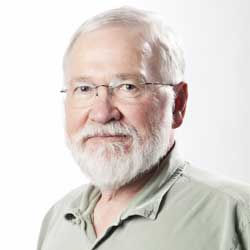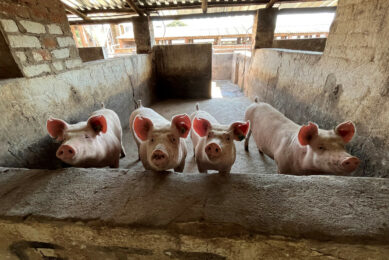An unusual friendship

Interview with Prof Dr Hank Harris: As a novelty to the IPVS congresses, the Vancouver edition will be presenting a Tom Alexander Memorial Lecture for the first time in history. Prof Dr Hank Harris, Iowa State University, and good friend of the late Dr Alexander, will address the pig veterinary audience.
“I first met Dr Tom Alexander in 1972 at Cambridge, UK, before the second IPVS congress. We both headed laboratories and totally independently we published the same research, on the causes of swine dysentery. He published this in December 1971; we published ours in January 1972. Bob Glock and I met with David Taylor and Tom and at the end of May before the congress,” Prof Dr Hank Harris, Iowa State University explains. “It was the following year that Tom called me from England. At that time I had not heard of the company PIC – he was doing some work for them. He told me that one of their farms in Wisconsin needed to be quarantined because of swine dysentery, and asked if I could help sort out the misdiagnosis. So I did. After that we became close friends. Every now and again I still do work for PIC.”
Prof Dr Hank Harris from Iowa State University launch this year’s IPVS congress with the lecture, which is named after the late Dr Tom Alexander, who suddenly passed away in the months after the 2008 IPVS congress in Durban, South Africa. Dedicating a lecture to him would do justice to his enormous contribution to swine production and medicine progress, Harris explained.
“Really the most important idea was his creation and development of medicated early weaning (MEW). First he said we should medicate sows thoroughly, and then surgically remove piglets to prevent contact with respiratory secretions and faeces. He thought that this was a sure way ensure the pigs would be free from mycoplasma. Later, it turned out that this meant that the pigs were also free of other pathogens as well.”
In the US, Harris built on these ideas to construct a theory of modified MEW (MMEW) by completely isolating piglets from sows at 21 days of age.
When these concepts of MEW and MMEW were presented in 1988 at an AASV meeting in St Louis, Alexander downplayed the importance of his own ideas, and those of Harris. He didn’t see any practical implementation for them. A year later, however, Harris published an article on rearing of swine on multiple sites in the Veterinary Record and suddenly it became clear that there were practical ways to use Alexander’s original ideas on MEW in a major way world-wide, said Harris. “The commercial world jumped on it as it provided them a better way to manage their farms: the multi-site system. Neither one of us had expected that.”
It was shown that there were more advantages of MEW. “Weight is also critical here. Imagine pigs of eight or nine weeks of age that needed transporting from North Carolina to Iowa – or from Denmark to Holland. With MEW, it suddenly became three weeks of age. Interestingly, rather than a method for elimination of infectious agents, multiple site production became a management tool for the integrated industry and facilitated the major expansion in the 1980s/90s. It transformed the industry!”
Achievements
Apart from MEW, Harris recalls other achievements from Alexander, who was the first to describe Streptococcus suis type II in the 1980s. He also introduced Specific Pathogen Free pig production procedures to Canada.
Last but not least, Harris recalls the field where both of them ‘met’: swine dysentery. “This was the research we initially did concurrently and independently. Over the next decades, we conducted research together. Both of us were eager to discover the causes of diseases, as well as the way in which they interacted. We also did consultancy with PIC together. I’d say it is not common for scientists to work together like we did.”
It was for this reason that Harris was pleased as well as honoured when he was asked to give the first Dr Tom Alexander Lecture. This is in fact the second presentation that he has given in Dr Alexander’s honour. The first one was at the Pig Veterinary Society in England.
“I will try to predict what the future looks like. For this I will make use of several of Dr Alexander’s publications, for example, one from 1988 during the AASV meeting in Missouri entitled Disease Control, Past and Future. This also gives me the chance to see how well he predicted it.”











